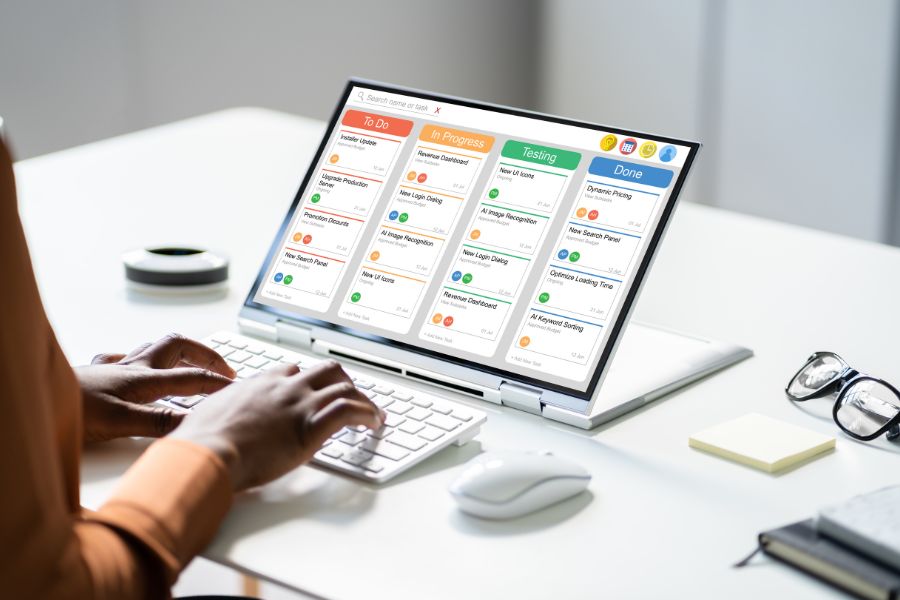As the digital marketplace evolves, the significance of customer experience has never been greater. For businesses seeking to distinguish themselves, a robust Customer Experience Management system is not just beneficial—it’s essential. These systems go beyond simple data aggregation and analysis; they enable organizations to deliver personalized, impactful experiences that foster customer loyalty and drive revenue growth. To thrive in this environment, choosing the right CEM system tailored to your specific business needs is crucial. This guide will illuminate the path to selecting the ideal CEM system, ensuring your business can consistently exceed customer expectations and achieve lasting success.
What is a Customer Experience Management System?
A Customer Experience Management system is a sophisticated platform designed to help businesses effectively manage and enhance interactions with customers across multiple touchpoints and channels.
These systems integrate a variety of tools and processes to understand, measure, and improve every aspect of the customer journey.
By providing comprehensive insights and facilitating seamless engagement, a CEM system enables businesses to deliver exceptional, personalized experiences that boost customer satisfaction and loyalty.
Understanding Your Business Needs
To effectively select a Customer Experience Management (CEM) system that aligns with your business objectives, it’s crucial to follow a structured approach to understanding your specific needs and requirements.
- Identify your business goals and objectives
Clearly define your customer experience goals.
Whether you aim to increase satisfaction, improve retention rates, or boost sales through personalized marketing, having specific objectives will guide your choice of CEM system. According to PwC, 73% of consumers say a good experience is key to influencing their brand loyalties.
- Analyze your current customer experience processes
Evaluate the effectiveness of your current customer experience processes. Use customer feedback from surveys and online reviews to identify areas needing improvement. This analysis highlights specific pain points a CEM system can address.
- Determine the key features you need in a CEM system
Identify essential features required in a CEM system to meet your objectives. Key features include robust customer feedback tools, advanced data analytics, personalized marketing capabilities, and seamless CRM integration. Gartner reports that 81% of companies expect to compete primarily on customer experience in 2024.
- Assess your budget and resources
Evaluate your budget and available resources for implementing and maintaining a CEM system. Forrester notes that 79% of businesses see increased customer satisfaction from CEM investments. Ensure your budget covers initial setup and ongoing expenses like software updates, training, and support.
By understanding your business needs through these steps, you can effectively select a CEM system that enhances customer experience, drives growth, and fosters loyalty.
Key Features to Look for in a CEM System
When selecting a Customer Experience Management (CXM) system for your business, consider the following key features to ensure it meets your requirements:
Customer Feedback Collection: Look for robust tools to collect feedback across various touchpoints, including surveys, online reviews, social media, and customer support interactions. Real-time feedback is crucial for understanding customer sentiment and identifying improvement areas.
Data Analysis and Reporting: Advanced analytics capabilities are essential for deriving actionable insights from customer data. Choose systems that efficiently analyze large data volumes, uncover patterns, and generate comprehensive reports, enabling informed decision-making and personalized interactions.
Personalization Capabilities: Ensure the system can segment customers based on behavior, preferences, and purchase history. This allows for targeted marketing campaigns, personalized recommendations, and customized communications that resonate with individual customers.
Integration Capabilities: Select a CEM system that seamlessly integrates with CRM, ERP, and marketing automation platforms. Integration ensures a unified view of customers across all touchpoints and facilitates coordinated interactions.
Automation and Workflow Management: Automation features streamline repetitive tasks, improving efficiency and consistency in customer interactions. Look for systems that automate email marketing, follow-up communications, support ticketing, and content delivery.
Scalability and Flexibility: Choose a system that can scale with your business growth and adapt to evolving customer needs. Scalable solutions handle increasing data volumes and user requirements, while flexible systems allow for configuration and customization to fit specific workflows.
Vendor Evaluation and Selection
Selecting the right vendor for your Customer Experience Management (CEM) system is crucial to ensuring the system aligns with your business objectives and effectively enhances customer satisfaction. Here’s a structured approach to evaluating and choosing the best vendor:
1. Define Your Requirements
Based on your business goals and needed features, clearly outline your requirements for customer feedback collection, data analysis, personalization, integration, automation, scalability, and flexibility.
2. Research Potential Vendors
Identify vendors offering solutions aligned with your requirements. Research their capabilities, industry experience, customer reviews, and reputation. Consider vendors recognized by analysts like Gartner or Forrester.
3. Evaluate Vendor Capabilities
Request demonstrations and proposals from shortlisted vendors. Assess the usability and functionality of their systems through live demos or trial periods, focusing on how well they meet your specific needs and integrate with your existing technology.
4. Assess Integration Capabilities
Ensure the CEM system can seamlessly integrate with your CRM, ERP, and marketing automation platforms. Integration capabilities are essential for consolidating customer data and delivering consistent experiences.
5. Consider Scalability and Support
Evaluate the vendor’s ability to scale the system as your business grows. Discuss options for handling increased data volumes and user access. Inquire about ongoing support, including training, maintenance, and technical assistance.
6. Review Pricing and ROI
Understand the total cost of ownership, including setup fees, licensing, customization costs, and maintenance. Calculate potential ROI based on expected improvements in customer satisfaction, retention, and operational efficiency.
7. Check References and Case Studies
Request references and review case studies demonstrating successful implementations. Contact references to gather insights into their experience with the vendor, system performance, and support.
8. Negotiate Contract Terms
Discuss contract terms, including service level agreements (SLAs), data security, and software updates. Clarify pricing, renewal terms, and additional costs for future upgrades or changes.
9. Finalize Selection and Implementation
Select the vendor that best meets your criteria for functionality, integration, scalability, support, and cost-effectiveness. Work closely with the vendor during implementation to ensure a smooth transition and effective deployment of the CEM system.
How ConnectPOS Can Enhances Your Customer Experience
ConnectPOS serves as a robust Point of Sale (POS) solution and enhances customer experience through integrated Customer Experience (CX) solutions. Here’s how ConnectPOS can significantly improve customer satisfaction and loyalty:
Integrated Customer Experience Solutions
ConnectPOS seamlessly integrates various Customer Experience Management (CEM) software applications. This integration enables businesses to consolidate customer data from multiple channels and touchpoints into a unified platform. By leveraging comprehensive customer insights provided by CEM systems, businesses can personalize interactions, predict customer behavior, and tailor marketing strategies effectively.
Key Features and Benefits
- Real-time Customer Feedback Collection: ConnectPOS facilitates real-time collection of customer feedback at the point of sale. This includes satisfaction surveys, product reviews, and social media interactions, allowing businesses to address issues and enhance service quality promptly.
- Advanced Data Analytics: The integration with CEM software enhances ConnectPOS’s analytics capabilities. Businesses can analyze customer purchasing patterns, preferences, and trends to uncover actionable insights. This data-driven approach enables personalized recommendations and targeted marketing campaigns, improving customer engagement and conversion rates.
- Personalized Customer Interactions: ConnectPOS enables personalized customer experiences based on historical purchase data and preferences. By understanding individual customer needs, businesses can offer tailored promotions, loyalty rewards, and personalized recommendations, fostering stronger customer relationships and loyalty.
- Automation of Customer Workflows: ConnectPOS automates repetitive tasks and workflows, such as order processing, inventory management, and customer support inquiries. Automated workflows streamline operations, reduce manual errors, and ensure consistent service delivery, enhancing overall efficiency and customer satisfaction.
FAQs: How To Select The Right Customer Experience Management System For Your Business
What key features should I look for in a CEM system?
When evaluating Customer Experience Management (CEM) systems, prioritize the following key features:
- Customer Feedback Collection: Tools for gathering and analyzing customer feedback across various channels like surveys, reviews, and social media.
- Data Analysis and Reporting: Advanced analytics capabilities to derive actionable insights from customer data, enabling personalized marketing and improved decision-making.
- Personalization Capabilities: Ability to segment customers based on behavior and preferences to deliver personalized experiences and targeted communications.
- Integration Capabilities: Seamless integration with CRM, ERP, and other business systems to ensure a unified view of customer data and streamline operations.
- Automation and Workflow Management: Features to automate tasks, workflows, and customer interactions to enhance efficiency and consistency in service delivery.
- Scalability and Flexibility: Scalable solutions that can accommodate growth and adapt to evolving business needs and technological advancements.
How do I evaluate and compare different CEM system providers?
When comparing CEM system providers, consider the following factors:
- Functionality: Assess whether the system meets your specific business requirements, including key features and customization options.
- Integration: Evaluate the ease and depth of integration with your existing systems to ensure seamless data flow and operational efficiency.
- User Experience: Test usability through demos or trials to gauge ease of use and accessibility for your team members.
- Vendor Reputation: Research vendor credentials, client testimonials, and industry recognition to gauge reliability and customer satisfaction levels.
- Support and Training: Inquire about support services, including training options, service level agreements (SLAs), and ongoing technical assistance.
- Cost and ROI: Compare pricing models, including initial setup costs, licensing fees, and ongoing maintenance, against the expected return on investment (ROI) in terms of improved customer satisfaction and business outcomes.
What are the common challenges when implementing a CEM system, and how can I overcome them?
Common challenges when implementing a CEM system include:
- Data Integration Complexity: Integrating customer data from multiple sources can be challenging. Overcome this by defining clear data integration processes and leveraging integration tools provided by the CEM system vendor.
- Resistance to Change: Employees may resist adopting new technology and processes. Address this by involving key stakeholders early in the process, providing comprehensive training, and demonstrating the benefits of the CEM system through pilot programs.
- Ensuring User Adoption: Ensure widespread adoption by engaging employees in the implementation process, addressing their concerns, and emphasizing the system’s value in improving customer interactions and operational efficiency.
- Maintaining Data Security: Safeguarding customer data by implementing robust data security measures and compliance with data protection regulations like GDPR or CCPA.
- Measuring ROI: Define clear metrics and KPIs to track the impact of the CEM system on customer satisfaction, retention rates, and revenue. Regularly analyze data and adjust strategies to maximize ROI and achieve long-term success.
Conclusion
Selecting the right Customer Experience Management system requires a meticulous assessment of your business goals, current processes, and vendor capabilities. By aligning your objectives with the features offered by CEM systems and proactively addressing implementation challenges, you can empower your organization to deliver exceptional customer experiences consistently. Investing in a tailored CEM system enhances customer satisfaction and positions your business for sustained growth and competitiveness in today’s dynamic marketplace.
Ready to transform your customer experience? Contact us today to discover how ConnectPOS can streamline your operations and delight your customers with seamless, personalized service.
ConnectPOS is a all-in-one point of sale solution tailored to meet your eCommerce POS needs, streamline business operations, boost sales, and enhance customer experience in diverse industries. We offer custom POS with features, pricing, and plans to suit your unique business requirements.




